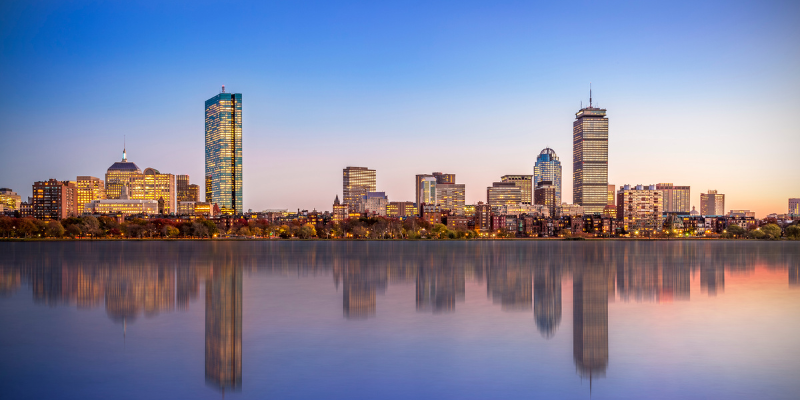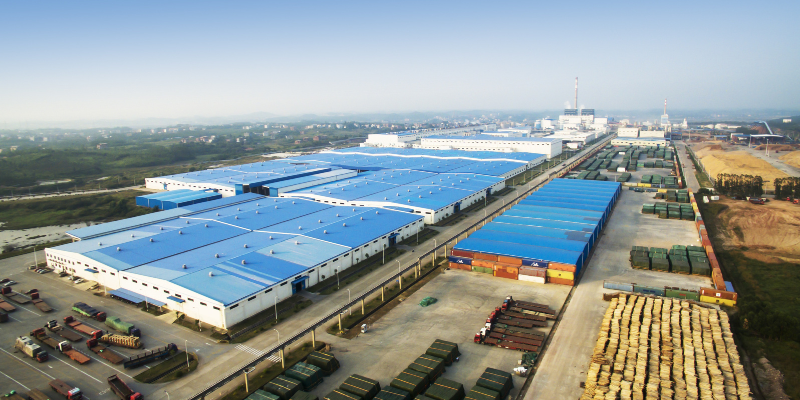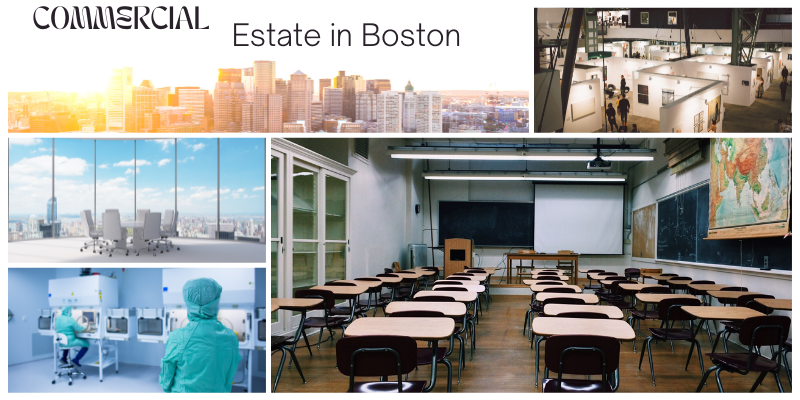Commercial Flat Roof Repair: What Are Commercial Roofs in a Nutshell?
Reading Time: 6 minutesCommercial flat roofs are critical to many commercial buildings but require specialized maintenance and repair to ensure long-term durability. In this blog post, we’ll take an in-depth look at what precisely a commercial flat roof is and why it may be the right choice for your business. Plus, learn about potential issues that could impact its longevity and how best to address them with reliable commercial flat roof repair or replacement services! Understanding the basics of commercial flat roofing can help you identify necessary repairs and allow for proactive management to prevent more expensive repairs.

There are several large categories for roofs, depending on the angle of inclination, construction features, area, coating material, installation method, etc.
According to roofing experts, there are two types of building specialization. The first is residential property. The second is commercial real estate.
Commercial roofs are roof structures on any commercial, manufacturing, or municipal building not used for residential purposes, for example, shopping and office centers, industrial facilities, warehouses, shops, hospitals, schools, churches, etc.
How Many Buildings With Commercial Roofs Are There in Boston?
According to recent research, nearly 750,000 commercially roofed buildings are currently in construction in Massachusetts.
There are over 20,000 commercially roofed buildings in and around Boston (MA), which is nearly 5% of all commercial property in the State.
The number of residential properties in the city is much larger, as commercial buildings account for at most 7-8% of all facilities.

However, in terms of building size, commercial buildings take up nearly half of the floor space (45% of the floor space, to be precise). Most of this area belongs to 1,700 commercial office buildings.
One of the fundamental differences between a commercial roof and a non-commercial one is the inclination angle. Almost all commercial buildings have flat or low-slope roofs. Another difference is the roof area.
- Boston has nearly 7,000 commercial buildings with roof coatings up to 20,000 square feet.
- There are almost 2,000 buildings with a roof from 20 to 100 thousand square feet.
- More than 600 buildings have roofs from 100,000 to 500,000 square feet. This category of facilities makes up the majority of the total floor space in the commercial buildings category in Boston.
- There are 80 buildings with commercial roofing up to 1 million square feet. Flat roof repair costs for such structures can be expensive, especially if a large roofing area needs replacement.
- There are roofs in Boston with an area of more than 1 million square feet. At the moment, there are 23 buildings in this area. Repairing commercial roofs of such a large area requires special equipment and unique approaches.
If you are looking for commercial flat roof repair ‘near me’ in Boston, remember that residential and commercial roof repair services, costs, and tactics are different.
Old and new buildings
Repair of commercial roofs is an instead demanded service. And the reason why owners and tenants of commercial buildings turn to roofers so often is easily explained.
About 50-60% of all commercial real estate in the city has existed since the last century. Many buildings were built even before 1950. To a greater extent, this statement applies to Public Services Buildings and Large Multifamily buildings. These buildings are more likely than others to require periodic commercial flat roof repair services.
On the other hand, most office buildings, shopping centers, and med-lab industry buildings were built after 1980.
Even though buildings with modern roofing materials occasionally require commercial roof repair services, they are better at protecting buildings from leaks, winds, and snow. The service life of modern materials is higher as well.
Below is a table of the average age of buildings in Boston, depending on their purpose.
| 1950 and earlier | 1950-1980 | 1980-2000 | 2000-2020 | |
| Office Centers | 40% | 25% | 20% | 15% |
| Retail and Shop Centers | 50% | 20% | 15% | 15% |
| Garages and Parking Lots | 40% | 35% | 15% | 10% |
| Med-Lab Buildings | 30% | 25% | 20% | 25% |
| Public Services | 70% | 15% | 10% | 5% |
| Conventional Assembly | 60% | 15% | 15% | 10% |
Commercial Flat Roof Repair: What Materials Are Used Most Often?
The roofing contractors usually offer several appropriate commercial flat roof repair options, depending on the roofing material, the area of the problem, and the type of building. Ask an expert roofer whether your roof needs repair or replacement.
Complete replacement of the roofing material of an existing roof is a solution for critical problems. Considering the area of the average commercial roof, it requires financial investments.
Partial replacement of the roofing material, the use of repair kits, and the installation of patches is the solution for minor roof damage. It is cheaper but is not suitable for some materials.

There are several common roofing materials in Boston:
Built-up roofing (BUR) is an old roof installation method used in the middle of the last century. Despite the low cost of materials, BUR roofs are difficult to repair.
Modified bitumen roof is one more old-school option. It is affordable but less practical than alternative solutions in the long run.
Rubber roofing is a more modern type of roofing. It includes TPO, EPDM, and PVC materials that are easy to install and repair. However, some rubber roofs lose their flexibility and tightness over time. Nevertheless, long service life, cost-effectiveness, and energy-efficient properties put membrane materials among the best choices.
Metal roofs are durable and strong roofs. However, metal roofing material is unsuitable for all commercial buildings. Metal is susceptible to corrosion, and it gets hot in summer. In addition, metal roofing can be noisy during rain and wind.
Commercial Flat Roof Repair: Main Features and Problems
Flat roofs have many advantages, such as easy maintenance, quick installation, and repair. In addition, a flat roof is a practical architectural solution for large buildings.
But flat roofs also have disadvantages. One of them is the danger of leaks and water damage. Due to the design features, water can accumulate on the roof surface. After that, it can seep through damaged material and leaking coating seams inside the building. So pay special attention to protection against leaks during repairing and replacing old roofing material.
What is more, the average commercial roofing system is more complicated than residential roofs. Therefore commercial flat roof repair and roof replacement require special skills and qualifications.

- Commercial offices. Boston’s total roof area of office buildings is about 125 million square feet. As a rule, roofing systems include ventilation equipment, air conditioners, and electrical networks on the surface.
- Med-Lab Industry. The city’s combined roof area of hospitals, laboratories, and medical centers is about 48 million square feet. Modern buildings’ rubber roof material allows for quick repairs. Older buildings have BUR (built-up roof) roofs or modified bitumen roofs.
- Conventional Assemblies. This type’s total area of buildings is about 35 million square feet. Most roofs are built using old technologies, including the BUR method. Several layers of tar and sheet material (asphalt papers) assemble them. Repairs can be time-consuming in this case, as roofers must remove a large amount of an old coating.
- Warehouses. Boston’s total roof area of warehouse buildings is about 29 million square feet. Many warehouses have a metal roof (corrugated steel). During the repair and replacement of the roof, specialists pay attention to protection against leaks and corrosion, using special fasteners.
- Schools. The total roof area of schools in Boston is about 22 million square feet. Roof repairs in schools follow local and federal building standards.
- Retail. Boston’s total area of roofs of supermarkets, centers, and shops is about 19 million square feet. Various materials, from asphalt shingles to modern membranes, cover them.
- Hotels. The city’s total area of hotel roofs is about 8 million square feet. Repair methods for commercial hotel roofs often overlap with those for apartment building roofs.
- Garages. The total area of garages and roofed parking lots in Boston is about 5 million square feet.
- Restaurants. Restaurants’ roofs cover 1 million square meters.

Commercial Flat Roof Repair: who to contact?
Repairing commercial roofs in Boston requires specialized commercial roofing contractors with the appropriate training and experience, licenses, and insurance.
Be sure to read reviews about the company you are interested in. Don’t forget to check photos of completed projects. If everything is OK with the portfolio, request a detailed estimate. Usually, roofing experts listen to building owners’ demands and provide them with detailed estimates after the inspection of the commercial roof.
Denis is the driving force behind ID Flat Roof, a leading company in Boston specializing in flat roof repair and installation for over 20 years.
Expertise:
Denis excels in PVC, TPO, EPDM, and rubber roofing. His meticulous approach ensures quality and customer satisfaction.
Innovation:
Denis incorporates cutting-edge solutions like skylights and solar PV roofing.



